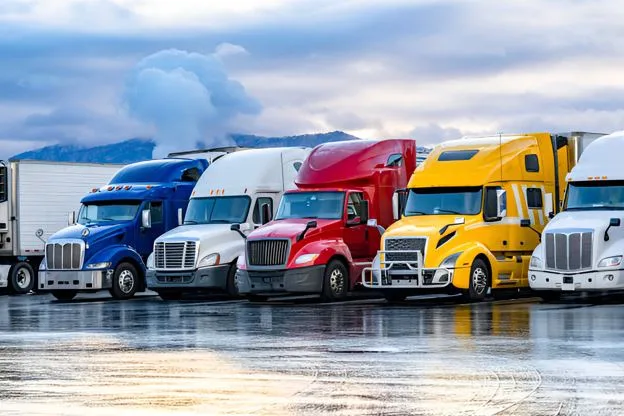Buying a Trailer? 7 Critical Checks Before You Buy
Buying a trailer is often deceptively simple. Unlike buying a car, where you have engines, transmissions, and sophisticated electronics to worry about, a trailer seems like a basic frame on wheels. However, this simplicity can lead to complacency. A poor choice in a trailer can result in dangerous towing conditions, legal nightmares, or a piece of equipment that simply doesn’t do the job you need it to do.
Whether you are looking for a utility trailer for weekend landscaping, an enclosed cargo trailer for moving, or a heavy-duty flatbed for hauling cars, the principles of inspection and selection remain largely the same. This guide breaks down the critical factors you must evaluate to ensure you make a safe and smart investment.
1. Define the Mission: What and How Much?
Before you even look at a classified ad or visit a dealer, you must have a rigid understanding of your requirements. The “I might need it for…” mindset often leads to overspending on a trailer that is too heavy to tow efficiently, or underspending on one that buckles under the load.
Calculating Payload vs. GVWR
The most critical number on a trailer is the GVWR (Gross Vehicle Weight Rating). This is the maximum total weight of the trailer plus its cargo.
- The Trap: Many buyers look at a trailer with two 3,500 lb axles and assume they can carry 7,000 lbs of cargo. This is false.
- The Reality: You must subtract the weight of the trailer itself (curb weight) from the GVWR to find the actual payload capacity. If a trailer has a 7,000 lb GVWR but weighs 2,000 lbs empty, you can only legally and safely carry 5,000 lbs.
Open vs. Enclosed
- Open Utility: easier to load oddly shaped debris, lighter to tow, and generally cheaper. However, your gear is exposed to weather and theft.
- Enclosed Cargo: acts as a mobile garage. It offers security and weather protection but catches significantly more wind (wind resistance), which drastically reduces your tow vehicle’s fuel economy and stability in high winds.
2. Match the Trailer to the Tow Vehicle
You cannot look at a trailer in isolation; it must be paired with your specific vehicle.
- Towing Capacity: Check your vehicle’s owner’s manual—do not trust the hitch rating alone. The hitch might be rated for 10,000 lbs, but if your truck is rated for 6,000 lbs, that is your limit.
- Tongue Weight: This is the downward force the trailer exerts on the hitch ball. It should generally be 10-15% of the total loaded trailer weight. If your vehicle has a soft rear suspension, a heavy trailer will cause the rear to sag, lifting your front steering wheels off the road and causing a loss of control.
- Electrical Connections: Does your vehicle have a 4-pin flat connector or a 7-way round blade? 4-pin connectors typically handle lights only. 7-way connectors handle lights, battery charging, and electric brakes. You will need to match these or install adapters/wiring upgrades.
3. Structural Integrity: Material and Build
When inspecting a trailer, look past the fresh coat of paint.
Steel vs. Aluminium
- Steel: Strong, durable, and easy to weld if repairs are needed. The downside is rust. If you live in an area where salt is used on roads, a steel trailer requires diligent maintenance.
- Aluminium: Lightweight and rust-resistant. An aluminium trailer allows you to carry more cargo weight because the trailer itself weighs less. However, aluminium is prone to stress cracks over time and requires specialised welding skills to repair.
Frame Construction
Look at the frame rails. Are they C-Channel, Tube, or Angle Iron?
- Box Tube: generally offers the best resistance to twisting (torsion) but can trap moisture inside and rust from the inside out if not weeping holes are not clear.
- C-Channel: strong and easy to inspect for rust since there is no “inside.”
- Angle Iron: typically found on lighter, cheaper trailers. It is prone to flexing under heavy loads.
The Weld Check: Inspect the welds where the tongue meets the main frame. This is the highest stress point. Look for cracks in the paint (which indicate metal flexing underneath) or amateur “bubble gum” welds that lack penetration.
4. The Running Gear: Axles, Hubs, and Suspension
This is the “engine room” of the trailer. If these components fail, you are stranded.
Single vs. Tandem Axle
- Single Axle: Easier to maneuver by hand (you can push it around your driveway) and cheaper to maintain (2 tyres, 2 sets of bearings). However, if a tyre blows out, it can be catastrophic.
- Tandem (Double) Axle: More stable at highway speeds and tracks straighter. If you have a blowout, the second tyre on that side provides a safety margin to get off the road. However, you pay double for tolls on some roads and double for maintenance.
Suspension Types
- Leaf Springs: The traditional setup. It is reliable, cheap to repair, and equalises load well between axles. However, it provides a bouncier ride for the cargo.
- Torsion Axles: Rubber cords inside the axle tube provide suspension. These offer a much smoother, independent ride and a lower deck height. The downside is that they are not easily repairable; if a torsion axle fails or sags, you usually have to replace the whole axle.
Tires and Bearings
- The Date Code: Trailer tyres often rot before they wear out. Check the DOT code on the sidewall (a 4-digit number). “3521” means the tyre was made in the 35th week of 2021. If the tyres are more than 5-6 years old, plan on replacing them immediately, regardless of tread depth.
- ST vs. LT: Ensure the trailer has “ST” (Special Trailer) tyres, which have stiffer sidewalls to prevent swaying. Avoid trailers with “P” (Passenger) car tyres.
- The Wiggle Test: Jack up the trailer and grab the tyre at the 12 and 6 o’clock positions. Wiggle it. Any play indicates loose or worn wheel bearings.
5. Braking Systems
For light utility trailers (under 3,000 lbs), brakes may not be required (check your local jurisdiction). For anything heavier, brakes are essential.
- Surge Brakes: These use a hydraulic master cylinder in the tongue. When you slow down, the trailer pushes against the truck, compressing the cylinder and activating the brakes. They are great for boat trailers (electric brakes don’t like water) but cannot be controlled by the driver manually.
- Electric Brakes: These are activated by an electronic controller in your tow vehicle. They offer the best control, allowing you to adjust braking force or manually activate trailer brakes to stop a sway event.
- Breakaway System: Buying a used trailer with brakes? Pull the pin on the emergency breakaway box (a small box with a battery on the tongue). This should immediately lock the trailer brakes. If it doesn’t, the battery is dead or the wiring is faulty.
6. Decking and Ramps
Flooring
- Pressure Treated Wood: Most common. Check for rot, specifically near the bolt holes. Boards are easy to replace.
- Steel/Diamond Plate: extremely durable but slippery when wet and heavy.
- Mesh: Good for landscaping (grass clippings fall through), but can sag under heavy point loads (like the wheels of a zero-turn mower).
The Ramp Gate
Lift the gate. On many utility trailers, a steel gate is incredibly heavy, creating a risk of back injury.
- Weight: This is where aluminium shines. If you are hauling heavy machinery but want to keep the trailer weight manageable, look for high-quality aluminium ramps. Companies like SureWeld are industry standards for this, offering lightweight aluminium ramps that don’t sacrifice the load-bearing capacity needed for heavy machinery.
- Spring Assist: If sticking with steel, look for “spring assist” mechanisms that make lifting the gate a one-handed operation.
- Reinforcement: Check if the gate is reinforced; a bent gate hinge is a common failure point on used trailers.
7. The Final Deal: Paperwork, Provenance, and Value
The final step combines the legalities of the purchase with the financial decision of buying new versus used.
Provenance and Title
Never buy a trailer without a clear title or transferable registration, depending on your local laws.
- VIN Verification: Trailers are one of the most stolen items because they are easy to hook up and drag away. Check that the VIN plate is present and matches the paperwork. If the VIN is scratched off or the plate is missing, walk away.
- Homemade Trailers: Be wary of trailers registered as “Homemade.” While some are built by skilled fabricators, many are poorly constructed using mobile home axles (which are illegal for highway use in many places) or scrap metal. Insurance companies are often hesitant to insure homemade trailers.
New vs. Used: The Value Equation
Trailers hold their value incredibly well. It is not uncommon to see a 5-year-old trailer listed for only 10-15% less than a brand new one.
- Buy Used If: You are handy with tools. A used trailer almost always needs wheel bearings repacked, new wiring, or new tyres. If you can do this yourself, you save money.
- Buy New If: The price gap is narrow. The warranty on the frame and axles, plus the peace of mind of fresh tyres and wiring, is often worth the extra few hundred dollars.
Conclusion
Buying a trailer requires a critical eye. Don’t be swayed by a fresh paint job. Get on the ground and look at the axles. Check the dates on the tyres. Verify the wiring works. The right trailer will serve you for decades with minimal maintenance; the wrong one will be a constant source of frustration and potential danger on the road. Prioritise safety (brakes, tyres, hitch) over convenience features, and ensure your tow vehicle is up to the task.



